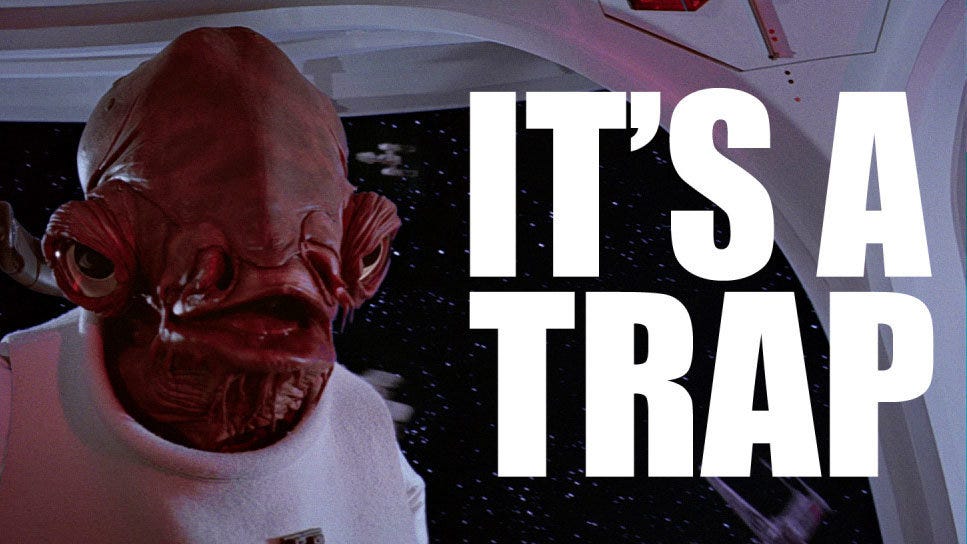So you just became a Product Manager. Congratulations!
Perhaps you were a developer who wanted to move into Product Management, perhaps you were an analyst frustrated with only being able to recommend opportunities and not pursue them, or perhaps you were just really good at getting shit done.
The truth is, it really doesn’t matter how you got here, it matters what you do with this amazing opportunity. Product Management is one of the fastest-growing and most exciting jobs in our economy today — okay, maybe I’m a bit biased on that last piece 🙂
Why is it such a great role? Because by working with your developers and the other teams at your company you have the power to create something from nothing. It’s pure magic.

You now have the power to hear customer feedback, observe actions, and do something about it! You have the power to change the world (one sprint at a time!).
But before we think big, let’s think a little bit smaller. Let’s think about how you can start most effectively in your new role as a Product Manager.
What are the things you should (and shouldn’t) do in your first 90 days?
Over the past 7 years, I’ve started in many different Product roles at 3 different companies and I’ve seen countless other Product colleagues begin as well. I’ve seen many strategies work (and even more not work) for getting your feet on the ground, building momentum, and making a major positive impact.
Things to Do
- Do talk with customers
It should be a no-brainer, but I’ve often seen that new Product Managers spend more time meeting everyone at the new company than meeting the people who matter most: the customers.

What do your current customers love?
What do they hate?
What are their hopes and dreams?
These are just some of the questions that you should be thinking about as you begin your new role and these are the questions you’ll be hoping to answer better and better for the entire time you’re working there!
2. Do use the product(s) extensively
Hopefully, during the interview and research process, you used the product. Now is the time to amp up that usage big time. Do an audit of every feature.
What is its purpose?
How does it connect with other features in the product?
What % of customers use this feature?
What level of maturity is this feature?
What type of support does it need?

Write down a list of answers to these questions and any others you can think of to help you develop a holistic perspective on the state of the product(s).
Remember, everyone else at the company doesn’t have the fresh
“outsider” eyes that you have and they will greatly appreciate your perspective, once you form it.
3. Do observe how teams work
While you likely had some exposure to the company and how work is completed during your onsite interview, now is your opportunity to observe how teams work (or don’t work) effectively together from the inside.
How is engineering work accomplished from idea to launch?
How do technical and non-technical teams communicate?
Where do you see gaps in communication or miscommunication?

As a new Product Manager, you’ll be working with many different teams and it’s imperative for you to build strong communication channels across these groups if you want your product(s) to succeed.
4. Do take notes and reflect
Don’t rush.
When you start a new job, there is intense pressure to share insights immediately. Don’t fall for it!
Take tons of notes each day and reflect on them before going home. Star or circle the most important insights and think about those more. Over time, you’ll start to see patterns emerge that you can act on. But don’t be anxious if it takes you several weeks to get clarity in your opinions.
5. Do create a 30–60–90 plan
As your feet start to get on the ground, begin drafting your objectives for 30, 60, and 90 days.
Who do you want to meet?
What team-level relationships do you want to strengthen?
Where do you see opportunities to improve the development process?
When do you want to plan your first sprint?
When do you want to build your first roadmap?

While your plan doesn’t need to be perfect, the pure act of creating a plan is a great forcing mechanism to convert your loosely formed ideas into a structure that’s more purposeful.
You should also refine your 30–60–90 plan several times before you share it with your manager and your team for feedback.
Things to Avoid
- Don’t start too fast
I’ve fallen into this trap.
You just started in a new and exciting role. You want to prove to everyone (and yourself) that you are deserving of it. In order to create that instant proof, you dive into the deep end day 1: You start creating tickets, planning sprints, communicating objectives, and more before you really even know what your customers care about. Big mistake!

With this approach, you’ll create the illusion of a fast start, but in weeks or months, the high cost of your approach will be painfully obvious. You will have made incorrect decisions, you will have blown up processes that were working well, and you will probably even have made a few enemies along the way.
Don’t be that guy (or gal!)
2. Don’t declare hard-set and uncompromising positions
You were hired for this Product Management position because you deserve it. You have a wealth of experience, passion, and ability to succeed. However, you’re still starting something new. No matter how similar this company is to your last one, there will still be differences. Differences in communication, differences in team structure, differences in the product.
For these reasons, don’t declare “hard-set” or uncompromising positions. First, they’ll likely be wrong. Second, you’ll be viewed as someone who forms opinions before gathering enough information. Gather information for several weeks at least before starting to synthesize and share more directed opinions.
3. Don’t “fit into the mold”
This one may be a little surprising. If you’re joining a larger company or a very successful one, you may feel immediate pressure to fit into their mold of Product Management. They likely have a very refined process of product development, strong leadership, and strong relationships with other teams. It’s easy to copy the behavior you’re seeing from others and blend in.

You were hired because you bring new things to the table! Not because of your ability to assimilate mindlessly into a Product Management machine.
Again, make sure not to start too fast before learning or to declare hard-set positions off the bat, but when the time comes, share your own perspectives, and don’t be afraid to be different or to be the counter-point. Your colleagues and the business you join will appreciate it.
4. Don’t fall victim to pressure from leadership
Product is a highly visible part of the business, perhaps the most visible.
When deadlines get missed or features don’t find market-fit, it’s often Product who leadership looks to first for an explanation. Even as a new Product Manager, you’re going to feel pressure from leadership, both Product leadership and company leadership to move faster, promise unrealistic deadlines, and to treat everything as a priority.

If you’re a person (like me) who likes to make others happy and likes saying “yes” way more than saying “no”, you need to have a constant voice in your head checking and pushing back against this pressure.
In the short-term, saying “yes” a lot will impress your leaders by providing the illusion that you are someone who can do everything (quickly!), but reality will hit soon enough and you’ll find yourself in a very bad place.
Product Managers — What has and hasn’t worked for you in starting new roles?
I’d love to hear if I missed anything that can benefit new PMs, please share in the comments or with me on Twitter at @amitch5903



0 Comments